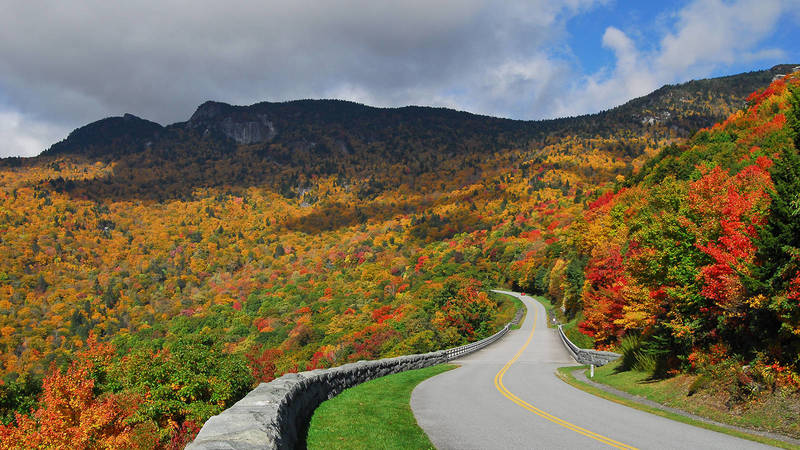The looming threat of a government shutdown is now a reality. Here's what it means for our national parks.
Update, October 1, 2013: As of today, the federal government is officially shut down and the consequences outlined in this story are now taking effect. Concerned citizens can take action and continue using the Capitol Switchboard at 202.224.3121 to speak directly with their representatives’ offices.
Update, September 27, 2013: Today, the Department of the Interior (DOI) released its contingency plans with detailed information on national parks and Park Service employees that will be impacted in the event of a government shutdown. Figures in this story have been updated accordingly. For more information see the DOI website.
The looming threat of a government shutdown is now a reality. This worst-case scenario has impacts throughout the federal government, including the National Park Service. Here’s what a shutdown means for our 401 national parks.
Question: Now that the federal government has shut down, how many national parks are closed?
Answer: All national park sites are federally managed, therefore, all 401 parks, monuments, historic houses, battlefields, and other units of the park system are closed, including sites in all 50 states, the District of Columbia, and U.S. territories such as Puerto Rico, Guam, and Samoa. Visitor centers, campgrounds, research facilities, museums, and other facilities are shuttered. Educational programs, ranger hikes, and special events are cancelled. Everything from family vacations to school field trips to weddings will be affected.
According to the Department of the Interior (PDF):
Effective immediately [in the event of a government shutdown], the National Park Service will take all necessary steps to close and secure national park facilities and grounds. Day use visitors will be instructed to leave the park immediately. … Wherever possible, park roads will be closed and access will be denied. National and regional offices and support centers will be closed and secured, except where they are needed to support excepted personnel. These steps will be enacted as quickly as possible while still ensuring visitor and employee safety as well as the integrity of park resources.
Question: How many employees are affected?
Answer: Based on the Department of the Interior’s new 2013 contingency plan, the shutdown has put nearly 87 percent of Park Service employees—more than 21,000 staff members—indefinitely out of their jobs.
Question: What is the shutdown costing the National Park Service in lost revenue?
Answer: According to an October 1, 2013 press release, the Park Service estimates that it is losing $450,000 per day in entrance fees and revenue from park activities such as campground reservations and tours.
Question: How are local businesses being affected?
Answer: According to the Department of the Interior, the last government shutdown in 1995-1996 cost local businesses $14 million per day. Our analysis indicates the actual impact on businesses now could be closer to $30 million per day.
Question: How are local governments being affected?
Answer: The overall economic impact of national park closures is substantial for some regions that rely on national park tourism. For example, during the last government shutdown, Mariposa County, California, lost $10,000 per day in tax revenue because Yosemite was closed and 25 percent of adults in the county were temporarily out of work. Visitation has increased steadily since 1996, meaning the impact on local tax receipts alone could be much higher. The average visitor spending per day in October over the last two years was more than $30 million.
Question: How many visitors are affected?
Answer: A shutdown will affect as many as 750,000 visitors daily across all parks. October is peak season for many tourists who travel to see the changing autumn leaves; family trips to parks like Great Smoky Mountains, Blue Ridge Parkway, Golden Gate, and Cape Cod will all be impacted. It is also peak wedding season in some parks, and many carefully planned events are now in jeopardy.
Question: What are the economic benefits of keeping parks open?
Answer: Every federal dollar invested in national parks generates ten dollars in economic activity. National parks are powerful economic engines, supporting $31 billion in private-sector spending annually. National parks also mean good jobs around the country. The National Park Service employs approximately 24,000 people, and national parks support 252,000 private-sector jobs.
Question: How long were national parks closed during the last government shutdown?
Answer: The parks were closed for a total of 27 days (Nov. 14-19, 1995 and Dec. 16-Jan. 6, 1996).
Question: Wouldn’t it be good for parks to have a break from visitation?
Answer: Closing our parks is not only depriving visitors of an experience of a lifetime, it is also preventing park staff from monitoring and maintaining natural and historic resources throughout the park system. Staff biologists, ecologists, and other resource professionals work to rid our parks of invasive species and to protect the threatened and endangered species that call our national parks home. Other staff members monitor grounds to prevent vandalism, illegal dumping, and other detrimental activities. While the shutdown allows for the most critical staff to remain, much of this work is being severely hampered by the government shutdown.
Question: What can national park supporters do to help?
Answer: Take action on NPCA’s website and call your representatives in Congress via the Capitol Switchboard at 202.224.3121. Tell lawmakers that you care about our national parks and want them open and funded. If you’re planning a visit to a national park in the near future, let them know how a national park shutdown is affecting you.
About the author
-
 John Garder Senior Director of Budget & Appropriations, Government Affairs
John Garder Senior Director of Budget & Appropriations, Government AffairsJohn Garder is Senior Director of Budget & Appropriations at NPCA. He is a budget analyst and researcher who advocates for more adequate funding for national parks to diverse audiences, including Congress, the White House, and the Department of the Interior.
-
Issues


